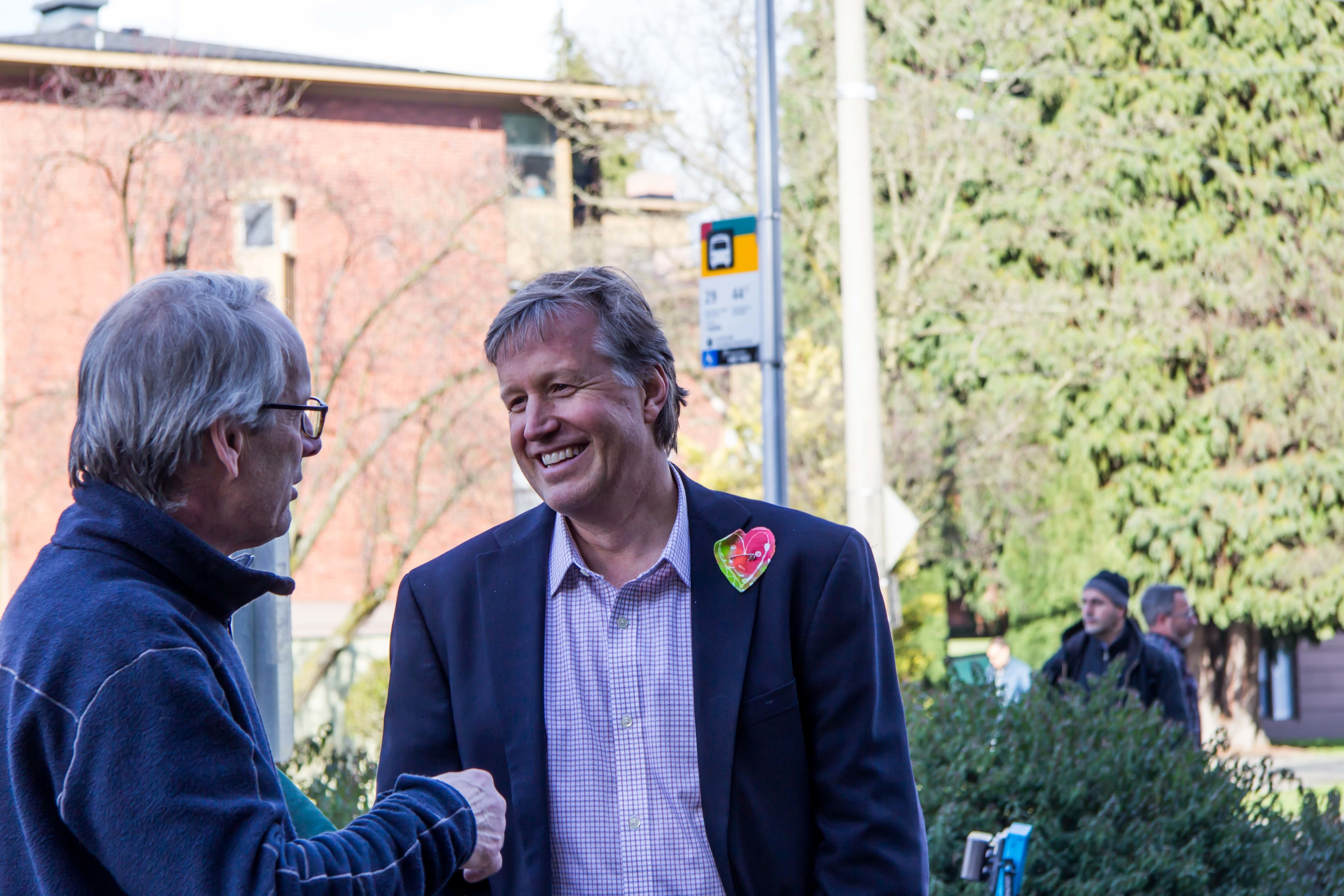The Real Difference Between the Competing Homeless Encampment Proposals

One big supposed difference between Seattle City Council member Mike O’Brien’s proposal to govern how the city deals with homeless camping and Sally Bagshaw’s competing proposal appears to be the amount of notice people get before being removed from camping sites.
While O’Brien and Bagshaw agree that homeless campers should be removed immediately from sites that are deemed unsafe or hazardous, or from sites such as schools, active park land, and sidewalks that need to be kept open for broader public use, the two council members seem to disagree dramatically on the amount of notice people who are camping on “suitable” sites should get before being forced off.
(Suitable sites, by the way, are not actually sanctioned, which is why people will ultimately be removed; the term “suitable” is simply meant to differentiate these spots from the aforementioned unsafe, hazardous, and general public priority sites.)
For these temporarily okay sites, Bagshaw’s proposal (though she’s apparently about to sign on to Mayor Ed Murray’s pending proposal as a substitute for hers), would give homeless campers offers of services and alternative shelter—and then give the homeless 72 hours to take the offers or be forced off the site.
In O’Brien’s proposal, homeless campers, after getting the same offers for services and shelter, would get 30 days before being removed.
However, when I pressed O’Brien to explain the significance of 30 days, it turned out, according to him, that the 72-hour versus 30-day guideline isn’t the important difference between the competing proposals, and is even somewhat trivial when it comes down to it.
The real difference, it turns out, is a debate over the credibility of the offers for services and housing that are made before any clock starts ticking—namely, are they legitimate offers that the city can actually follow through on and are they ones that meet the person’s needs.
O’Brien tells me: “Whether it’s 72 hours or 30 days, the real questions are 1) what are we offering unsheltered individuals, and 2) how are we doing the outreach?"
As O’Brien explains it, if the offers are legit, the timeline doesn’t present a practical difference because “if real offers like housing are made, then there will be enough people to fill those offers.”
His point? Practically speaking, with 3,000 homeless people in the streets, open beds are going to fill up quickly, which means other “offers” of shelter, won’t be credible offers and so, won’t trigger any clock for removing people.
In fact, O’Brien has indicated that the what will likely differentiate his proposal from Bagshaw's (or the mayor's) will come down to defining what actually constitutes a legitimate offer of help, not the timeline for people to accept that offer. He tells Fizz: “Current protocols provide limited options that just don’t fit people’s needs. My direction is to provide offers to people that match their needs with an adequate timeline of quality outreach and secured resources.”
There is another big difference, of course, between O’Brien’s POV and the mayor’s which precedes this issue. And that’s defining places fall under the “unsuitable” category. O’Brien has made it clear that all park land—as Bagshaw and the mayor want—cannot be taken off the table. As O'Brien explained last week:
The "unsuitable" [sites] is where it gets tricky because I will agree that it’s unsuitable for anyone to be sleeping outside. It’s an embarrassment for our city that we can create so much wealth in our city and yet haven’t figured out how to house all of us in our community. And that tonight I have 3,000 people that are going be sleeping outdoors without shelter, that is unacceptable. And to pretend that any place outdoors tonight is suitable is a misnomer. But that’s the language in the bill and the point is to say we want to prioritize our public space. Prioritize it in a way that says some of our space, it’s really important that people not camp in it. That might be a play field so my kid can go practice soccer, that there’s a tent in the middle of that kind of makes it hard to practice soccer. Might be an active park like Greenlake or University Playground where people are out there using it and people camping there would really inhibit folks to enjoy it in a way and there are a lot of folks using that. So what the language says now is maintain parks, so playgrounds and play fields, and places where the lawn is mowed essentially. Those would be listed as unsuitable.
But the other key part is that if we simply go through an exercise that step by step takes every single piece of public land off the table and takes it off limits, then I’m left with a situation that tonight I have 3,000 people that don’t have shelter, they’re going to sleep somewhere in the city and I’ve just made it illegal for them to sleep anywhere in the city, which is exactly where we are today. With a system that doesn’t work.
The exercise that I’m going through in my mind is that let’s work from that bottom of the list and go up until we have enough land that can accommodate 3,000 people and then that’s about where you draw the line. So, I’m reverse engineering a definition that’s says look these active spaces where folks are, but we can’t kid ourselves into thinking that the solution is to say it’s illegal to sleep outside when there are 3,000 people that are going to sleep outside today.
If there is any significance to the 30-day guideline, by the way, it's that homeless advocates argue that you need several weeks to transition someone from an encampment to the correct shelter.




